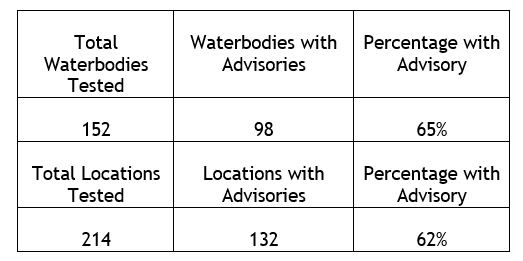IT’S SO HAAAARD TO SAY GOODBYEEEE TO ARAAAA
Before I go into the details of our latest exciting policy initiatives, I want to let you know that this is my last policy update for the Alabama Rivers Alliance.
I have accepted a position at Defenders of Wildlife in Washington, D.C. where I am excited to work on federal environmental policy and wildlife conservation. My time in Alabama has been extraordinary. I am so thankful for our members and partner groups who supported me each and every day of this incredible job. I have seen dams torn down. I have testified before thousands of people about our state policy. I have met with countless politicians and agency representatives. I have written hundreds of pages of meticulously crafted comments. I have worked on bills and watched the Governor sign them into law. But most importantly, I have worked with some of the greatest people I have ever met. Moving away is never easy, but I know that I will always have a home and a family in the Alabama environmental community.
As the weather finally cools down across the Southeast, much of the State is hoping the rains will be enough to overcome drought conditions. Just last week, over 50 percent of the state was in some kind of drought—with almost the entire state in abnormally dry conditions. While there has been some rain over the last few days, it does not erase the economic and health impacts related to the previous month. Seeing the numerous wildfires, wilted crops, dead fish, and dwindled drinking water sources, reinforces the need to focus on sensible and science-based water policy. Stay tuned for upcoming opportunities to continue pushing the state forward toward an Alabama Water Plan!
THIS FRIDAY – EMC TO DISCUSS ADEM DIRECTOR’S PERFORMANCE REVIEW
This Friday October 18th, the Environmental Management Commission will meet in Montgomery. The Commission is made up of seven Governor Appointees; it is tasked with overseeing the Department of Environmental Management and developing state environmental policies. The full Commission will meet at 11 am.
The Personnel Committee of the Commission will meet at 10 am to discuss the job performance of ADEM Director Lance LeFleur. The Director has come under fire in the past year for his handling of water issues in the state as well as public comments in the media. Hundreds of public comments were filed as a part of this year’s job performance reviews. I urge all those who submitted comments or who are interested in our environment in Alabama to attend the meeting.
THERE’S SOMETHING ABOUT LITTLE RIVER
One of my favorite things that Alabama Rivers Alliance does is the Southern Exposure film program. This year we had four amazing films. Perhaps my favorite was Something About Little River.
The film focuses on the Little River in Northeast Alabama, showing the beauty of the canyon area and telling the stories of community activists trying to preserve it. The film wonderfully captures the reasons why Little River should be a National Wild and Scenic River. ARA is thrilled to partner with our friends at Little River Waterkeeper to launch our #KeepLittleRiverWild campaign. To learn more about the campaign and Wild and Scenic designation, please check out our new website at www.KeepLittleRiverWild.org.
Despite having 132,000 beautiful miles of rivers and streams, there is only one Wild and Scenic river in Alabama: 68 miles of the Sipsey Fork of the Black Warrior River. You can look at the Sipsey to see the tremendous benefits of Wild and Scenic. In addition to preserving rivers in their free-flowing conditions, they promote tourism and lead to economic growth. Dozens of local businesses have benefited from the Sipsey’s designation. We want to give the same competitive advantage to those surrounding the Little River—all while ensuring the river will be pristine and flowing for generations to come.
Ultimately, designation requires an Act of Congress. That will take a lot to get there, so in the meantime we are asking everyone to lend their name to this worthy cause. If you are a citizen who cares about the natural beauty of the state, a small business that would benefit, or an organization fighting for better water conditions, please head over to KeepLittleRiverWild.org to sign our petition!
FISHERMEN’S RIGHT TO KNOW
In recent policy updates, I have discussed the state’s fish consumption advisories and the need to better protect and inform our anglers. In a state where fishing is one of our most beloved pastimes, Fishermen’s Right to Know whether fish are safe to eat is paramount to protecting public health and recreation.
Nearly 2/3 of the locations that the state tested have some type of health advisory warning the public to limit its consumption. As fate would have it, the largemouth bass—the State Freshwater Fish—constituted over 50% of all the health advisories.

One of our top goals at ARA is to improve public knowledge about these advisories to prevent anglers from ingesting dangerous contaminants like mercury, PCBs, and PFOS.
Last month, I was thrilled to help coordinate a meeting in the Alabama State House to address these issues. With our partner groups at Coosa River and Black Warrior Riverkeeper, we met with State Senator Andrew Jones to discuss ways to better inform his constituents on Weiss Lake and the Coosa River. Staff from the Alabama Department of Public Health and the Alabama Department of Environmental Management also joined us to examine potential improvements for our statewide policy.

The meeting was extremely productive, as we talked about the need for better public outreach, communication with rural communities, and specific signage to go near boat ramps and public fishing areas. Specifically, we looked at examples from other states to see what types of signs adequately inform the public.
We are very thankful to Senator Jones and both of the agencies for attending the meeting. With their help, we are confident that next year’s advisories will do an even better job of warning the public of possible contamination and that we can work together to produce specific signs.
HYDROPOWER RELICENSING
Large hydropower dams are one of the most harmful impediments to water quality and quantity in Alabama. In addition to significantly changing the natural landscape and hydrology of the impounded areas, they have been known to cause problems with fishery health, wildlife habitat, water quality and oxygen levels, and streambank erosion. While these dams coal fired power plants, they are hardly “clean energy” when you consider these effects. Because they are such big projects, the dams have to get licenses from the federal government to operate.
Currently, there are two projects going through relicensing in Alabama: the Coosa and Tallapoosa Rivers.
The Coosa relicensing has been going on for almost two decades. Still, we are trying to get the project owner Alabama Power to properly consider the harmful environmental impacts of its dams and make important improvements. Check out this letter, written by the Southern Environmental Law Center that details what improvements are still needed for (1) dissolved oxygen levels, (2) fish entrainment – when fish are killed by the turbines, and (3) fish passage for better habitat connection.
Things are still developing for the Harris Dam relicensing and the area of the Tallapoosa downstream of Lake Wedowee. We have heard from dozens of residents of dangerous sedimentation and erosion—as the streambanks on the river are eroding at very high rates. If you are interested in the relicensing or would like to voice your story, visit Alabama Power’s website by clicking here.
Water Is Life,
Curt Chaffin, ARA’s Policy Director



